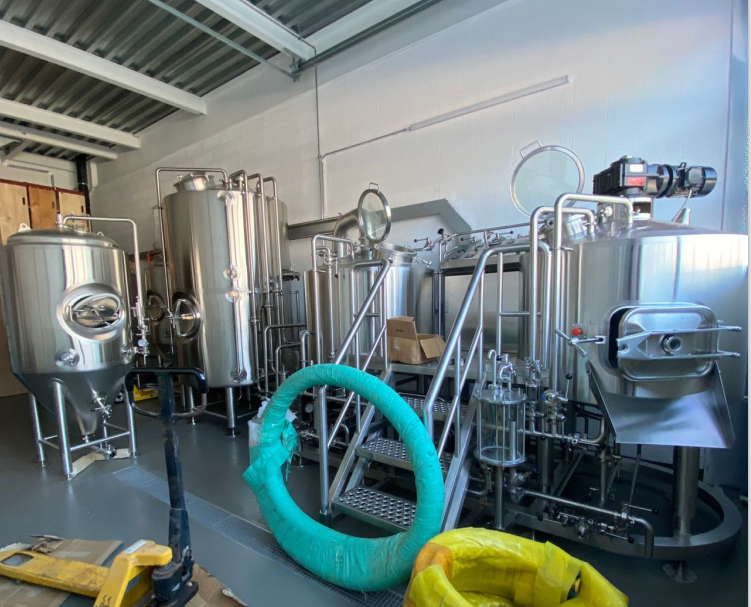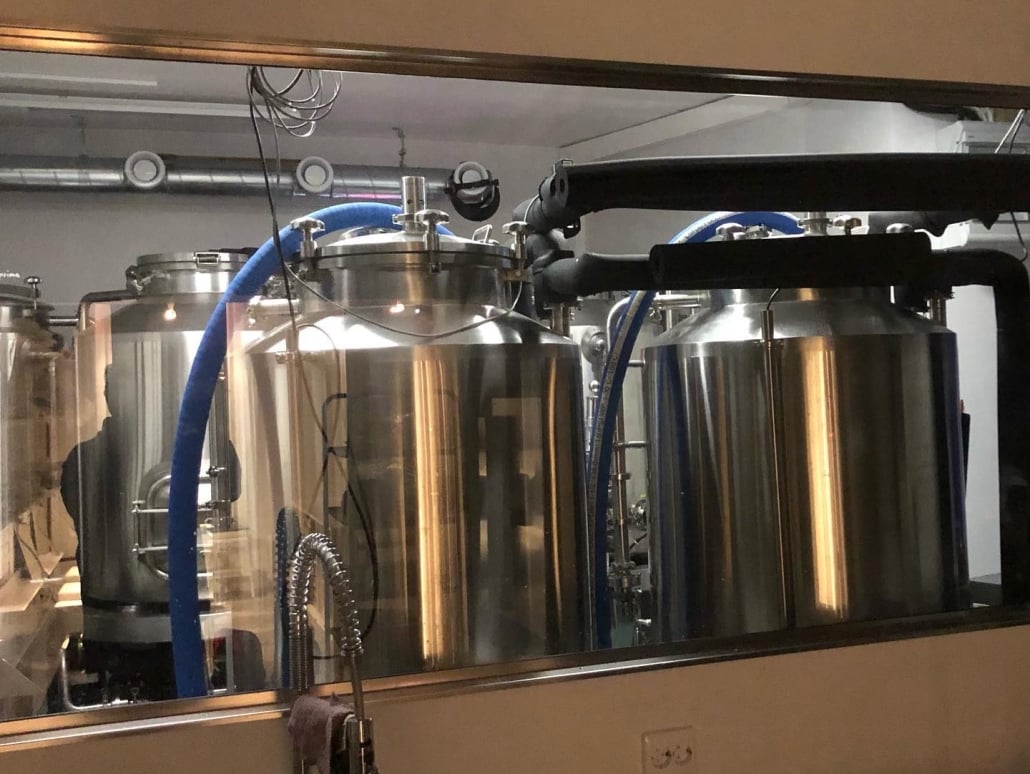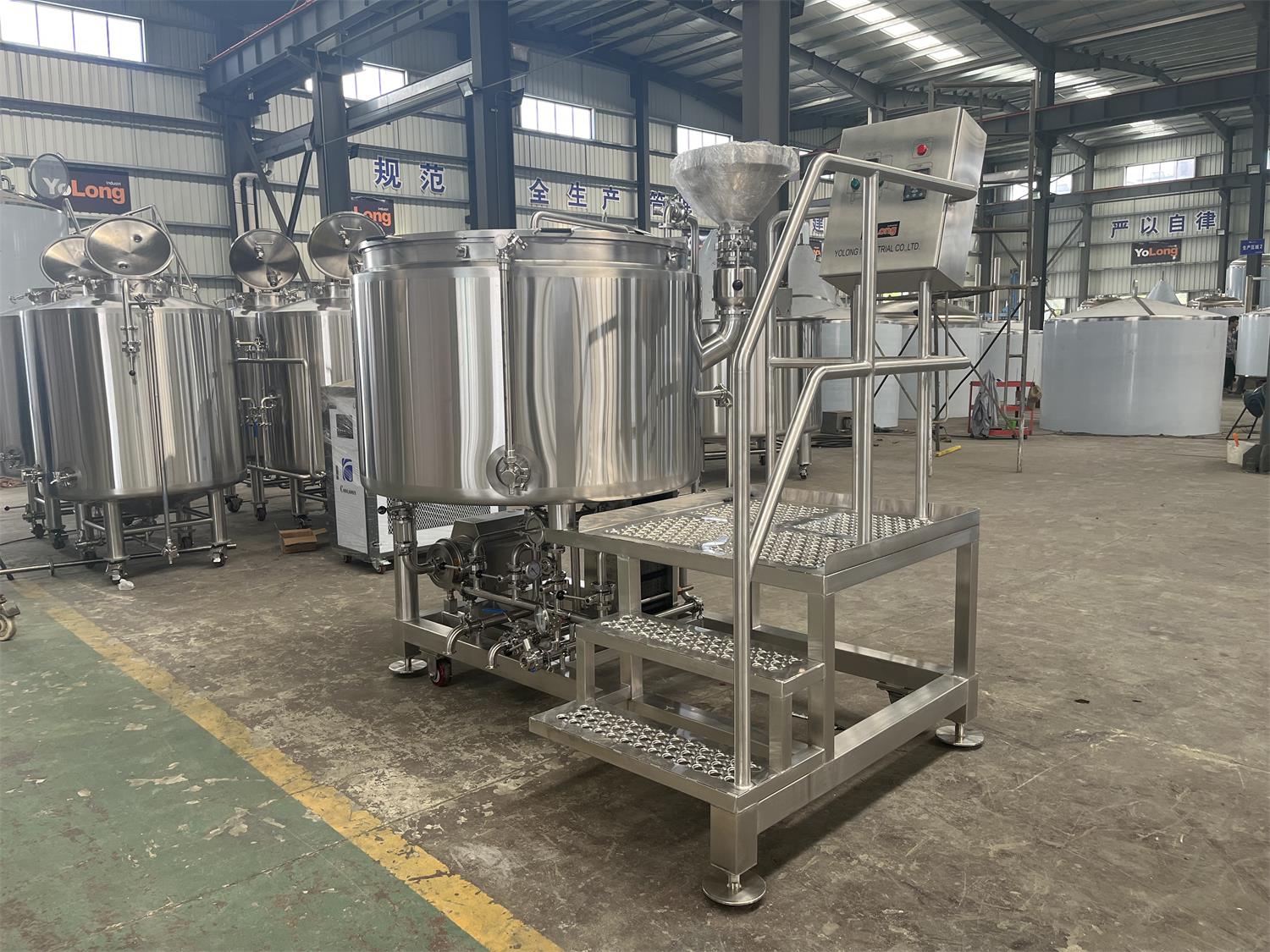Conical Fermenter Tank
When diving into the world of brewing, you quickly realize that the equipment you choose can make or break your craft. One such crucial piece of equipment is the conical fermenter tank. This isn’t just another fancy term thrown around by brewmasters. It’s a game-changer, especially if you’re serious about brewing top-notch beer. But what makes this tank so special? How does it compare to traditional fermenters? Let’s break it all down.
Overview of Conical Fermenter Tanks
In simple terms, a conical fermenter tank is a vessel designed for fermenting beer that has a conical (cone-shaped) bottom. This shape isn’t just for aesthetics; it’s functional. The cone allows yeast and sediment to settle at the bottom, making it easier to remove them and harvest the yeast for reuse. For any home brewer or professional brewery, this can significantly impact the quality and clarity of the final product.
The use of conical fermenters has grown in popularity over recent years, largely due to their efficiency, ease of use, and the quality of beer they help produce. Compared to traditional flat-bottomed fermenters, conical fermenters reduce the risk of contamination, simplify the transfer process, and allow for better control over the fermentation process.

Present Equipment Guide for Conical Fermenter Tanks
Choosing the right equipment is key to your brewing success. Whether you’re a homebrewer looking to upgrade or a commercial brewer planning an expansion, understanding the features and benefits of conical fermenter tanks is essential.
Key Features of Conical Fermenter Tanks
- Material: Most conical fermenter tanks are made from stainless steel, which is durable, easy to clean, and doesn’t react with the beer.
- Volume: They come in a variety of sizes, ranging from small 5-gallon tanks suitable for homebrewers to massive 100-barrel tanks used in large breweries.
- Pressure Handling: Some conical fermenters are designed to handle pressure, allowing for fermenting under pressure and carbonating the beer in the same tank.
- Ease of Use: With a conical bottom, these tanks allow for easy yeast harvesting, trub removal, and transferring of beer.
- Temperature Control: Many conical fermenters include built-in cooling jackets or are designed to work with external chillers to maintain precise fermentation temperatures.
Why Choose a Conical Fermenter?
Conical fermenters offer several advantages over traditional flat-bottomed fermenters:
- Better Quality Control: The ability to separate yeast and trub from the beer ensures that only the cleanest beer is transferred for conditioning, resulting in a cleaner, better-tasting beer.
- Increased Efficiency: The ease of transferring beer and harvesting yeast reduces downtime between batches, allowing brewers to increase production without sacrificing quality.
- Versatility: Conical fermenters can be used for both primary and secondary fermentation, eliminating the need for multiple vessels and reducing the risk of contamination.
Types of Conical Fermenter Tanks
To help you decide which conical fermenter tank is right for you, here’s a breakdown of the different types available:
| Type of Conical Fermenter Tank | Description | Best For |
|---|---|---|
| Homebrew Conical Fermenters | Smaller, typically 5 to 15 gallons. Often made from plastic or stainless steel. | Homebrewers and small batch experiments. |
| Professional Conical Fermenters | Larger, ranging from 1 to 100 barrels. Made from stainless steel, with features like cooling jackets and pressure capability. | Craft breweries and commercial production. |
| Unitanks | Serve as both fermenter and bright tank. Can carbonate beer directly in the fermenter. | Breweries looking to streamline production. |
| Pressure-Rated Conical Fermenters | Designed to withstand pressure, allowing for pressure fermentation. | Advanced homebrewers and breweries experimenting with pressure fermentation. |
| Plastic Conical Fermenters | More affordable, lightweight, but less durable than stainless steel. | Budget-conscious homebrewers. |
The Brewing Process with Conical Fermenter Tanks
Using a conical fermenter can simplify and enhance your brewing process. Here’s how:
1. Primary Fermentation
After boiling your wort and cooling it down, you transfer it to the conical fermenter. The conical design helps in the even distribution of yeast, which begins the process of fermenting sugars into alcohol and CO2.
2. Yeast Collection and Trub Removal
As fermentation progresses, yeast and trub (unwanted solid matter) settle at the bottom of the cone. Thanks to the valve at the bottom, you can easily remove this sediment without disturbing the beer. This process not only clarifies the beer but also allows you to harvest and reuse yeast, which is particularly beneficial for brewers who want to maintain consistency across batches.
3. Secondary Fermentation (Optional)
Depending on your brewing process, you might opt for secondary fermentation. With a conical fermenter, you can do this without transferring the beer to another vessel. Simply remove the trub and yeast, and continue fermenting in the same tank. This minimizes the risk of contamination and oxidation.
4. Carbonation and Conditioning
Some conical fermenters, especially unitanks, allow for carbonation and conditioning directly in the fermenter. This means you can carbonate your beer without needing to transfer it to a separate tank, saving time and reducing the risk of infection.
Capacity, Space, Design, Layout, and Customization of Conical Fermenter Tanks
Choosing the right conical fermenter tank requires consideration of several factors. Here’s a detailed look:
| Factor | Details |
|---|---|
| Capacity | Conical fermenters are available in various sizes, from small 5-gallon tanks for homebrewers to 100-barrel tanks for commercial breweries. Choose based on your brewing scale. |
| Space Requirements | Consider the footprint of the fermenter. Larger fermenters may require more space, including height clearance, especially in commercial settings. |
| Design and Layout | Look for a fermenter with a layout that suits your brewing process. Features like cooling jackets, additional valves, and pressure capability can be crucial. |
| Customization | Many manufacturers offer customization options, including additional ports, pressure ratings, and even custom branding. This can enhance functionality and aesthetics. |
Suppliers and Price Range of Conical Fermenter Tanks
Finding the right supplier and understanding the price range can be a daunting task. Here’s a guide to help you navigate:
| Supplier | Price Range | Notes |
|---|---|---|
| Ss Brewtech | $200 – $2,000+ | Known for high-quality stainless steel fermenters, suitable for both home and professional brewers. |
| Spike Brewing | $400 – $4,000+ | Offers a wide range of conical fermenters, including pressure-rated models for advanced brewers. |
| Blichmann Engineering | $500 – $5,000+ | Premium conical fermenters with advanced features like cooling systems and pressure capability. |
| Anvil Brewing Equipment | $150 – $1,500 | Budget-friendly options, great for homebrewers looking to upgrade from basic fermenters. |
| Custom Suppliers | Varies widely | For breweries needing custom sizes or features, working directly with a manufacturer may be the best option. |
Installation, Operation, and Maintenance of Conical Fermenter Tanks
Proper installation, operation, and maintenance are crucial to getting the most out of your conical fermenter tank. Here’s a breakdown:
| Aspect | Details |
|---|---|
| Installation | Ensure your fermenter is installed on a level surface. For larger units, professional installation may be required, especially if connected to cooling systems. |
| Operation | Familiarize yourself with the fermenter’s valves and ports. Always sanitize thoroughly before use to prevent contamination. |
| Maintenance | Regular cleaning is essential. Use a CIP (Clean-In-Place) system if available. Periodically inspect seals, gaskets, and valves for wear and tear. |
How to Choose a Supplier for Conical Fermenter Tanks
Selecting the right supplier is as important as choosing the right equipment. Here’s how you can make an informed decision:
| Consideration | Details |
|---|---|
| Reputation | Look for suppliers with strong reputations in the brewing community. Check online reviews, ask for recommendations, and visit brewing forums. |
| Quality of Materials | Ensure the supplier uses high-quality materials, particularly stainless steel. Cheaper materials can lead to long-term issues like corrosion. |
| Customer Support | A good supplier should offer excellent customer support, including guidance on installation and operation. This can be crucial, especially for first-time buyers. |
| Customization Options | If you need specific features or sizes, choose a supplier that offers customization. This is particularly important for commercial breweries. |
| Warranty and After-Sales Service | A solid warranty and reliable after-sales service are vital. They can save you a lot of hassle if something goes wrong with your fermenter. |
Advantages and Limitations of Conical Fermenter Tanks
No piece of equipment is perfect. Here’s a comparison of the advantages and limitations of conical fermenter tanks:
| Aspect | Advantages | Limitations |
|---|---|---|
| Fermentation Control | Offers precise control over fermentation, with easy removal of yeast and trub. | May require more monitoring compared to simpler fermenters. |
| Versatility | Can be used for both primary and secondary fermentation, and some models allow for carbonation in the same tank. | Larger, more complex systems can be expensive and require more space. |
| Material Durability | Stainless steel fermenters are highly durable and long-lasting. | Stainless steel models can be costly, especially for larger sizes. |
| Ease of Cleaning | Designed for easy cleaning, especially if equipped with a CIP system. | Without proper maintenance, seals and gaskets can wear out over time, leading to potential leaks or contamination. |
| Scalability | Suitable for both small-scale homebrewing and large-scale commercial brewing. | Scaling up can be challenging and costly, particularly in terms of space and cooling requirements. |
How to Choose the Right Conical Fermenter Tank
Selecting the right conical fermenter depends on your brewing needs and budget. Here are some tips:
- Identify Your Brewing Scale: Determine whether you’re brewing at home or on a commercial scale. This will dictate the size and type of fermenter you need.
- Consider Your Budget: While stainless steel conical fermenters offer durability and features, they come at a higher price. Balance your needs with your budget.
- Think About Future Growth: If you plan to scale up your brewing in the future, consider investing in a larger fermenter or one that allows for additional features like pressure fermentation.
- Check for Compatibility with Existing Equipment: Ensure the fermenter you choose is compatible with your current brewing setup, including chilling systems and pumps.
Installation, Operation, and Maintenance Guide for Conical Fermenter Tanks
Installing and maintaining a conical fermenter tank properly is crucial to your brewing success. Here’s a detailed guide:
Installation
Before installing your conical fermenter, ensure that the location you choose is suitable. The surface should be level, and the area should have enough space to accommodate the fermenter’s height and any additional equipment like cooling systems.
For larger fermenters, particularly those used in commercial brewing, professional installation is recommended. This ensures that all connections, especially those related to cooling and pressure, are correctly installed to prevent issues down the line.
Operation
Operating a conical fermenter tank requires a basic understanding of its components:
- Valves and Ports: Familiarize yourself with the locations and functions of all valves and ports. These are crucial for adding and removing liquids, transferring beer, and cleaning the tank.
- Sanitization: Always sanitize the fermenter before use to prevent contamination. A conical fermenter’s design helps with easy sanitization, especially if equipped with a CIP system.
- Monitoring Fermentation: Keep an eye on fermentation temperatures, especially if your fermenter is not equipped with a cooling jacket. Regularly check the yeast and trub levels and remove them as needed.
Maintenance
Maintaining your conical fermenter tank is key to ensuring its longevity and the quality of your brews:
- Regular Cleaning: After each use, thoroughly clean the fermenter. Use appropriate cleaning agents for stainless steel, and avoid abrasive materials that could damage the surface.
- Inspecting Seals and Gaskets: Over time, seals and gaskets can wear out, leading to leaks or contamination. Regularly inspect and replace them as needed.
- Valve Maintenance: Valves are critical components that need to be kept clean and functional. Regularly check for any blockages or signs of wear.

FAQ
| Question | Answer |
|---|---|
| What is a conical fermenter tank? | A conical fermenter tank is a vessel designed for fermenting beer, featuring a cone-shaped bottom that facilitates the separation of yeast and trub from the beer. |
| Why should I use a conical fermenter tank? | Conical fermenters offer better control over fermentation, easy yeast harvesting, and reduced risk of contamination, leading to higher quality beer. |
| How do I clean a conical fermenter tank? | Cleaning involves using a CIP (Clean-In-Place) system or manual cleaning with appropriate cleaners, focusing on valves, ports, and the conical bottom. |
| Can I carbonate beer in a conical fermenter? | Yes, some conical fermenters, especially unitanks, allow for carbonating beer directly in the fermenter. |
| What sizes are available for conical fermenters? | Conical fermenters range from small 5-gallon tanks for homebrewers to large 100-barrel tanks for commercial breweries. |
| Is stainless steel the best material for fermenters? | Stainless steel is preferred due to its durability, ease of cleaning, and resistance to corrosion and reaction with beer. |
| What’s the difference between a conical fermenter and a unitank? | A unitank can be used for both fermentation and carbonation, while a conical fermenter is typically used just for fermentation. |
Conclusion
Choosing the right conical fermenter tank can elevate your brewing game, whether you’re a homebrewer or running a commercial brewery. From understanding the different types available, to knowing how to install, operate, and maintain these tanks, this guide has covered everything you need to make an informed decision. Remember, the key to great beer lies not just in the ingredients, but also in the equipment you use. Investing in a conical fermenter tank could be the game-changer you’ve been looking for in your brewing journey.
Share this entry
Interested in learning more about Brewing Systems including additional details and pricing information? Please use the form below to contact us!
YOLONG BREWERY EQUIPMENT FAQS
- Commercial Brewery / Craft Brewery / Microbrewery / Nanobrewery
- What is The Difference Between Craft Beer and Industrial Beer?
- The Bespoke Differences In Custom Brewing Systems
- Everything You Need to Know About Kettle Souring
- How to Choose Brewing Equipment for Your business?
- How To Choose The-Best Partner To Build Your Commercial Microbrewing System?
- Two Detection Sensors That You Need To Use In Your Brewhouse System
- Remote Control Applications in Brewing Equipment/How does it work?
- How To Clean Your Brand New Brewery Tanks?

